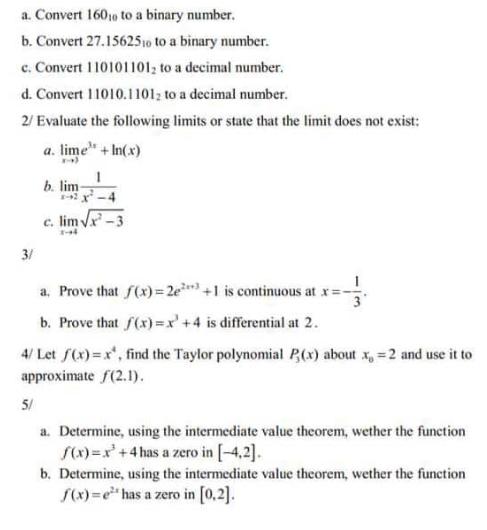Answered step by step
Verified Expert Solution
Question
1 Approved Answer
a. Convert 1600 to a binary number. b. Convert 27.15625 1o to a binary number. c. Convert 1101011012 to a decimal number. d. Convert

a. Convert 1600 to a binary number. b. Convert 27.15625 1o to a binary number. c. Convert 1101011012 to a decimal number. d. Convert 11010.11012 to a decimal number. 2/ Evaluate the following limits or state that the limit does not exist: a. lime+In(x) 1 2x-4 c. limx-3 3/ b. lim- 2-44 a. Prove that f(x)=2e+1 is continuous at ra b. Prove that f(x)=x +4 is differential at 2. 4/ Let f(x)=x*, find the Taylor polynomial P(x) about x=2 and use it to approximate f(2.1). 5/ a. Determine, using the intermediate value theorem, wether the function f(x)=x +4 has a zero in [-4,2]. b. Determine, using the intermediate value theorem, wether the function f(x)=e" has a zero in [0,2].
Step by Step Solution
★★★★★
3.47 Rating (150 Votes )
There are 3 Steps involved in it
Step: 1
Binary Conversions a Convert 160 base 10 to a binary number 160 in binary is 10100000 b Convert 2715625 base 10 to a binary number The integer part is 27 which in binary is 11011 The fractional part 0...
Get Instant Access to Expert-Tailored Solutions
See step-by-step solutions with expert insights and AI powered tools for academic success
Step: 2

Step: 3

Ace Your Homework with AI
Get the answers you need in no time with our AI-driven, step-by-step assistance
Get Started


